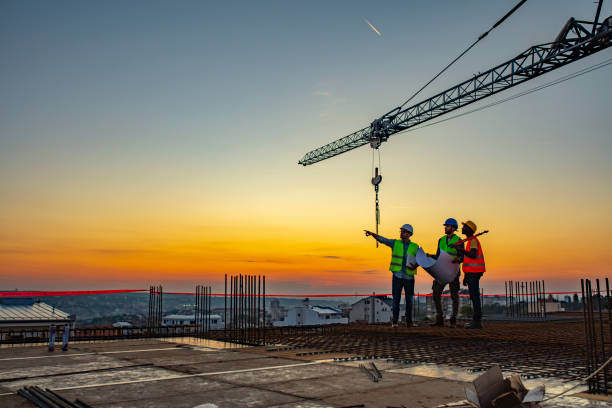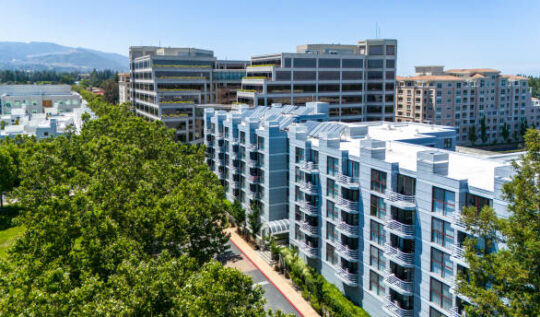How SB 35 Speeds Up Development in California — A Guide by JDJ Consulting Group
It’s no secret that California is facing a major housing crisis. Home prices keep climbing, rents are out of control, and construction just isn’t happening fast enough to meet demand. One big reason? The permitting and environmental review process is often long, complicated, and unpredictable.
Table of Contents
ToggleThat’s where Senate Bill 35 (SB 35) comes in.
This 2017 law is designed to make it easier and quicker to build qualifying housing developments—especially in cities that aren’t meeting their housing production goals. By creating a faster, streamlined approval process, SB 35 cuts down on red tape and gives developers more certainty.
At JDJ Consulting Group, we help developers, landowners, and affordable housing nonprofits navigate the complex world of entitlements and city approvals. In this guide, we’ll break down how SB 35 works, who qualifies, and how it can save you time and money on your next project.
What Is SB 35 and Why Was It Created?
SB 35 is part of California’s broader effort to boost housing supply. It was introduced by State Senator Scott Wiener and signed into law in 2017 as part of a larger housing package. The goal? Push local governments to meet their Regional Housing Needs Allocation (RHNA) targets and allow certain housing projects to skip lengthy, discretionary approvals.
SB 35 Eligibility Checker
Answer the following to see if your development may qualify for SB 35’s streamlined approval:
If a city or county isn’t meeting its housing targets—especially for affordable or below-market-rate units—SB 35 kicks in.
Here’s what makes SB 35 different:
Projects get ministerial approval, meaning no public hearings or CEQA reviews.
Local governments must make a decision within a strict timeline—usually 60 to 180 days.
As long as the project meets objective zoning standards, it must be approved.
SB 35 is meant to streamline the permitting process, cut delays, and make infill housing more feasible.
Table 1: Traditional Approval vs SB 35 Streamlined Review
| Feature | Traditional Approval | SB 35 Streamlining |
|---|---|---|
| CEQA Review Required? | Yes | No |
| Public Hearings? | Yes | No |
| Approval Timeline | 12–18 months (average) | 3–6 months |
| Subjective Design Review | Often required | Not allowed |
| Risk of Legal Challenge | High | Limited |
Not every project can use SB 35. There are specific rules developers need to follow. But if your site and proposal meet the criteria, SB 35 can be a powerful tool to speed up your timeline.
Here’s a simplified look at what makes a project eligible:
Project Type
Must be residential or mixed-use (with 2/3 or more of the square footage for housing).
Multifamily housing only — single-family subdivisions don’t qualify.
Location
Site must be infill (within urban boundaries and surrounded by development).
Must be zoned for residential or mixed-use and meet General Plan designations.
Site cannot be in environmentally sensitive areas like wetlands, farmland, or flood zones.
Local Housing Progress
SB 35 only applies if the city or county has not met its RHNA housing targets.
If they’re falling behind in building affordable units, then the law kicks in.
Affordability Requirements
10% of units must be affordable if city has not met its market-rate housing goals.
50% of units must be affordable if the city hasn’t met lower-income targets.
Table 2: Key SB 35 Eligibility Checklist
| Requirement Type | Requirement Detail |
|---|---|
| Zoning Compliance | Must meet objective zoning and design standards |
| Affordability Level | 10% or 50% units depending on RHNA progress |
| Site Type | Urban infill, not on restricted or protected lands |
| Building Type | Multifamily or qualifying mixed-use only |
| Construction Labor | Must use prevailing wage labor |
At JDJ Consulting Group, we help clients review project feasibility under SB 35, analyze site constraints, and prepare the required documentation to prove eligibility—so there are no surprises during agency review.
How SB 35 Speeds Up Approvals: Ministerial vs Discretionary Process
One of the biggest reasons projects in California get delayed is the discretionary approval process. That means projects must go through public hearings, environmental reviews, and local board approvals—all of which take time and can introduce uncertainty.

SB 35 changes that.
When your project qualifies for SB 35, it becomes ministerial. That’s a legal term, but in simple words, it means the city can’t say “no” if your plans check all the right boxes.
Let’s break it down.
Discretionary Review — The Traditional Roadblock
Under the usual path, most housing projects must:
Go through Planning Commission and City Council hearings
Complete a California Environmental Quality Act (CEQA) review
Meet subjective design criteria that can vary by neighborhood
Face public opposition and potential lawsuits
This means even a code-compliant project can get delayed for months or even years—and sometimes be denied completely.
Ministerial Review Under SB 35 — A Straightforward Path
SB 35 eliminates all of the above. If your housing project:
Complies with objective zoning standards
Meets affordability and site criteria
Uses qualified labor
Then the city must approve it—without hearings or CEQA.
Cities have a short window to respond:
60 days for projects under 150 units
90 days for projects with 150 units or more
Once the city confirms eligibility, they have:
90–180 days to complete all building permit approvals
And if they miss the deadline? Your project is automatically deemed approved.
This means no delays from public opposition, no lawsuits under CEQA, and a much faster path to construction.
Real Results: How SB 35 Has Accelerated Projects Across California
The data shows that SB 35 works. Developers, nonprofits, and housing advocates across the state have used it to push projects forward—especially affordable housing that might otherwise stall.
Real-World Projects Approved Under SB 35
Here are a few high-impact examples:
833 Bryant Street (San Francisco)
146 affordable units
Saved 30% in costs and cut approval time in half
No CEQA delays or public hearings
Vallco Town Center (Cupertino)
Over 2,400 units total; 50% affordable
Approved through SB 35 after years of local opposition
Paved the way for largest mixed-use housing plan in Cupertino’s history
Berkeley Way Apartments (Berkeley)
Combined permanent supportive housing and workforce housing
Fast-tracked to meet urgent homelessness needs
These examples show that SB 35 isn’t just theory—it’s helping cities build faster, cheaper, and with fewer delays.
Measurable Time Savings
According to a 2024 Pew Research Center study:
| City | Average Pre-SB 35 Timeline | Average SB 35 Timeline |
|---|---|---|
| San Francisco | 12–18 months | 3–5 months |
| Los Angeles | 9–12 months | 2–3 months |
| Oakland | 10 months | 3 months |
These numbers reflect time saved on permitting and approvals—not construction itself. For developers, this can mean serious cost savings and lower risk.
Can My Project Use SB 35? How JDJ Consulting Can Help You Qualify
Not every development qualifies for SB 35—but many projects that don’t initially appear eligible can become eligible with the right site strategy and guidance.
At JDJ Consulting Group, we help clients identify opportunities to use SB 35 by reviewing the details of the site, the project scope, and the city’s housing progress. Here’s how we walk our clients through the process.
SB 35 vs Traditional Approval Timeline
| Stage | Traditional Process | SB 35 Streamlined |
|---|---|---|
| CEQA Review | 6–18 months | ❌ Not required |
| Public Hearings | 2–4 hearings | ❌ None |
| Discretionary Approvals | Planning Commission, City Council | ✅ Ministerial review only |
| Total Approval Time | 12–36 months | 90–180 days |
Step 1 – Check if the City Is Behind on Housing Goals
SB 35 only applies if the local government is not on track to meet its housing production goals under the Regional Housing Needs Allocation (RHNA).
Each city must report its progress to the state. If it’s behind on:
Market-rate housing, the 10% affordability rule applies.
Low-income housing, the 50% affordability rule applies.
We help you:
Check RHNA status using HCD’s state dashboard
Determine whether the site is in an eligible city or unincorporated area
Step 2 – Confirm That the Site Meets SB 35 Location Rules
Even in a qualifying city, the site must meet strict criteria:
Urban infill location (not rural or agricultural)
Zoned for residential or mixed-use
Not in:
Wetlands or flood zones
Fire hazard severity zones
Environmentally protected areas
JDJ’s consultants cross-check zoning, land use maps, and state GIS data to ensure your project site qualifies before you invest time in design or permitting.
Step 3 – Ensure Project Meets Objective Design Standards
SB 35 only requires a project to meet objective standards—things like:
Building height and setbacks
Floor area ratio (FAR)
Lot coverage
Parking minimums (though SB 35 limits these)
We help align your plans with:
Local zoning codes
Specific plan overlays
Any applicable community plan policies
Step 4 – Use Qualified Labor and Pay Prevailing Wages
If your project has more than 10 units, SB 35 requires that you pay prevailing wages and use a skilled and trained workforce. This helps protect workers while still allowing for fast-track approvals.
We support clients by:
Connecting them with experienced general contractors who meet labor standards
Preparing the SB 35 compliance form required by most cities
Table 3: JDJ SB 35 Readiness Checklist
| Eligibility Factor | Requirement | JDJ Support Provided |
|---|---|---|
| Jurisdiction RHNA Progress | Not meeting housing goals | We verify RHNA compliance |
| Site Location | Urban infill, not restricted | GIS + zoning and site analysis |
| Objective Standards Compliance | Zoning + height + FAR + parking | Design coordination |
| Project Type | Multifamily or qualifying mixed-use | Pre-check land use compatibility |
| Affordability Threshold | 10% or 50% units | Pro forma + density study |
| Labor Compliance | Prevailing wage required | Labor policy and GC support |
Bonus – We Also Handle Application Submissions
Once eligibility is confirmed, we prepare and submit:
SB 35 Supplemental Application
Site plan package (objective standards matrix, zoning memo)
Outreach to city planners and case managers
JDJ acts as your point of contact with the city—so you don’t have to worry about missed deadlines or incomplete documentation. We also track all statutory review timelines to make sure your project moves forward on schedule.
Common Mistakes Developers Make When Applying Under SB 35
SB 35 is a powerful tool—but only if used the right way. Many projects get delayed or rejected because of avoidable mistakes. At JDJ Consulting Group, we’ve seen these issues firsthand and know how to help you stay on track.
Here are the most common missteps—and how to avoid them.

Submitting Incomplete or Inaccurate Applications
Cities must respond quickly under SB 35—but only after your application is complete.
Many developers rush and:
Leave out zoning compliance summaries
Don’t explain how they meet affordability thresholds
Forget to attach labor compliance documentation
How JDJ helps:
We prepare complete SB 35 packages, including zoning analysis, labor affidavits, objective standards matrix, and digital-ready site plans.
Misunderstanding Objective vs Subjective Standards
SB 35 only requires compliance with objective standards—those that are measurable and not open to interpretation.
Examples:
Objective: “Max height 45 feet”
Subjective: “The design should reflect neighborhood character”
Some cities try to sneak in subjective criteria. Developers often don’t push back—even though they legally can.
How JDJ helps:
We identify all valid objective standards and ensure your plans meet only what’s legally required.
Not Accounting for Prevailing Wage Rules
For projects with 10+ units, SB 35 requires the use of prevailing wage labor. Some developers ignore this, thinking it won’t be enforced.
This can lead to:
Denied applications
Delays at permit stage
Expensive penalties
How JDJ helps:
We partner with construction teams familiar with SB 35 rules. We also guide you in meeting documentation and reporting requirements.
Assuming the City Will Notify You of Delays
Many developers assume cities will automatically follow deadlines or flag missing items. But cities aren’t always proactive.
If you don’t track:
The 60/90-day eligibility clock
The 90/180-day approval deadline
…you might lose valuable time—or worse, miss your ministerial window.
How JDJ helps:
We track statutory deadlines and follow up with planners to ensure nothing slips through the cracks.
Failing to Maximize the Law’s Full Potential
Some developers use SB 35 only for basic approvals, missing out on additional benefits, like:
Reduced parking requirements
Automatic CEQA exemption
Protection from project opponents or lawsuits
How JDJ helps:
We help you design smarter and denser projects that use every advantage SB 35 offers—without triggering red flags.
Quick Recap: Mistakes to Avoid
| Mistake | Why It Matters | JDJ Solution |
|---|---|---|
| Incomplete application | Leads to review delays or rejection | Full SB 35 submission package |
| Misreading local zoning rules | Can trigger ineligible design | Objective standards memo |
| Ignoring labor requirements | Results in compliance penalties | Prevailing wage GC coordination |
| Not tracking SB 35 deadlines | Misses default approval protections | Timeline tracking + city outreach |
| Underutilizing streamlining benefits | Limits cost savings and project scale | Full design strategy support |
Final Thoughts: SB 35 Is a Game-Changer—If You Use It Right
SB 35 gives California developers a rare opportunity: faster approvals, no CEQA delays, and protection from discretionary denials. But the law is detailed—and one small misstep can slow your project or make you ineligible.
Whether you’re planning a multifamily development or repositioning underutilized land, JDJ Consulting Group can help you unlock the full power of SB 35. From pre-screening your site to building a compliant, streamlined application, we take care of the heavy lifting—so you can focus on building.
Need Help With SB 35 Entitlements?
Our land use consultants at JDJ Consulting Group have helped clients across Los Angeles and California navigate SB 35 with confidence. We’ll help you:
Confirm your site’s eligibility
Maximize density, height, and yield
Avoid delays with objective standards
Package a complete and compliant submittal
Track deadlines and respond to city reviews
Let’s talk about your project. Call us at (818) 233‑0750 or contact us online to schedule a free consultation. We’re here to help you move forward—faster.
FAQs Regarding How SB 35 Speeds Up Development
What types of projects qualify for SB 35 streamlining in California?
To qualify for SB 35’s streamlined approval, your project must meet specific criteria related to zoning, affordability, labor, and site conditions. Not all developments are eligible.
Key eligibility requirements include:
At least 10%–50% affordable units, depending on the city’s progress toward housing goals
Located in an area zoned for residential use
Complies with objective zoning standards and General Plan rules
Site must not be on environmental hazard or farmland zones
Uses skilled and trained labor, especially on larger projects
You can check your jurisdiction’s SB 35 status on the California HCD website.
Does SB 35 exempt my project from CEQA?
Yes, SB 35 allows qualified housing projects to skip CEQA environmental review entirely, making it one of the most powerful tools in California’s development toolbox.
Here’s what that means for developers:
No Environmental Impact Report (EIR)
No CEQA litigation delays
Faster timeline and reduced uncertainty
Projects can move straight to building permits after ministerial approval
This exemption only applies if all SB 35 conditions are met. Cities must approve the application if it complies with objective standards.
How fast can my project get approved under SB 35?
If your application is complete and meets all SB 35 criteria, cities must approve or deny it within 60 to 90 days, depending on unit count.
Timeline breakdown:
10 days: City notifies you if the application is incomplete
30–60 days: City must approve or deny once the app is deemed complete
180 days max: Total review timeline for large projects
By comparison, discretionary reviews with CEQA can take 12–24 months or longer.
Need help meeting submission standards? JDJ Consulting offers permit expediting and entitlement strategy services. Explore our work across Los Angeles.
What cities in California offer SB 35 streamlining?
SB 35 applies in cities and counties that haven’t met their RHNA housing goals, particularly for lower-income units. This includes many cities in Los Angeles County and across Southern California.
Eligible cities often include:
Los Angeles
Glendale
Alhambra
Oakland
San Diego
San Bernardino
Use the HCD SB 35 Determination Map to confirm if your project location qualifies.
JDJ Consulting provides localized entitlement support in dozens of cities. See our service areas.
Can I combine SB 35 with density bonuses or ADUs?
Yes. SB 35 works in tandem with other housing incentives, such as the State Density Bonus Law and Accessory Dwelling Unit (ADU) rules. This allows developers to maximize yield and design flexibility.
You may benefit from:
Extra density and floor area via Density Bonus Law
Fewer parking requirements
More flexible height, setback, and open space standards
Option to add ADUs or JADUs without triggering CEQA
These laws are stackable—if used strategically. JDJ can create a custom entitlement strategy that merges these tools.






SB 35 Eligibility Checklist: Is Your Project Qualified for Approvals?
July 21, 2025
[…] in California can be tough—especially with CEQA, zoning layers, and long agency reviews. But Senate Bill 35 (SB 35) offers a faster path if your project checks the right […]
SB 423 California Housing Law | Fast Track Developer Approvals
August 8, 2025
[…] development approval process faster, more predictable, and less risky. It extends the benefits of SB 35, which has helped many multifamily and mixed-use projects bypass lengthy local reviews. But SB 423 […]